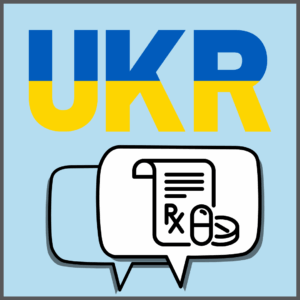
Despite the ongoing war, there are efforts to advance pharma serialization in Ukraine and thereby improve patient safety. The serialization guidelines were adopted by the Cabinet of Ministers on September 26, 2024. Additionally, regulations for parallel imports and packaging requirements have been amended. This article outlines the new regulations and explains why the country is eager to implement them.
Title: Resolution of the Cabinet of Ministers No. 1121
Responsible Authority: Ministry of Health of Ukraine
Products: Selected prescription and non-prescription drugs
Code Type: 2D GS1 DataMatrix
Timeline: Voluntary application of safety features from January 1, 2026; mandatory application from January 1, 2028.
Introduction of Serialization Regulations
On September 26, 2024, Ukraine took its first step toward improved patient safety. With Resolution No. 1121, it was decided that manufacturers may voluntarily serialize their medicines starting January 1, 2026. From January 1, 2028, pharma serialization will become mandatory in Ukraine. The implementation closely follows the EU model. The required safety features include tamper-evident packaging and a unique identifier in the form of a GS1 DataMatrix. This DataMatrix must include the product identification number, serial number, batch number, and expiration date.
Furthermore, a national organization for the verification of medicines will be established, operating a central database for verification purposes. This structure is strongly reminiscent of the EU’s National Medicines Verification Organizations (NMVOs) and is modeled accordingly.
New Packaging Regulations
On January 18, 2025, Law 3910-IX came into effect, changing the regulations for pharmaceutical packaging in Ukraine. Since then, manufacturers are prohibited from printing any advertising on primary and secondary packaging. This includes promotional claims, third-party logos, or trademarks not belonging to the CMO or MAH of the medicine. The regulation also poses challenges for the representation of local representatives, who are also no longer allowed to be mentioned on the packaging. As they are often responsible for regulatory support, pharmacovigilance, and communication with local healthcare professionals and patients this might cause problems in the future. The Ministry of Health recommends including this information in the package leaflet to ensure that important details remain accessible.
Handling of Parallel Imports in Ukraine
There have also been changes regarding parallel imports, signaling a clear alignment with the European Union. Starting January 1, 2025, a new law (No. 3860-IX) allows the parallel import of medicines into Ukraine. Aimed at promoting competition and lowering drug prices, authorized distributors may import medicines even if they are not from the original manufacturer. The condition is that the products must be identical or comparable to those registered in Ukraine and recognized as reference or generic medicines in both Ukraine and the exporting country.
Initially, imports are limited to EU member states as well as Iceland, Liechtenstein, and Norway. These medicines may not be sold in pharmacies but can only be distributed through hospital channels. Importing companies require both an import license and a special permit for parallel import. If repackaging is necessary, a manufacturing license is also required. A state register for parallel-imported medicines will be established once the necessary administrative and technical conditions are met.
Alignment with the European Union
Despite the impact of the Russian invasion in 2022, Ukraine has significantly accelerated its efforts to implement EU directives. The war even acted as a catalyst for reforms in areas such as pharmaceuticals, medical devices, and chemical safety. At the beginning of the war, Ukraine had to introduce emergency measures after parts of its supply logistics were attacked. These measures included the approval of unregistered medicines, waiving GMP documentation, and an expedited approval process. These changes aimed to ensure the availability of essential products for patient care.
From mid-2023, Ukraine began gradually phasing out these emergency measures and reintroducing EU-compliant standards. Key EU directives were adopted, particularly regarding drug approval, compliance with Good Manufacturing Practice (GMP), and the conformity of medical devices. The goal is not only to strengthen public healthcare but also to move closer to European integration and improve the country’s chances of joining the European Union.
Are you looking for a provider for pharma serialization? Feel free to contact us directly and arrange a non-binding appointment.
[Disclaimer]This information is only one possible interpretation of the regulations. They are also in a constant state of change, so the information in this article may be incomplete or out of date. The above article is expressly no legal advice. Please refer to the official documents for information before making any business decisions. (Status of information: July 2025)